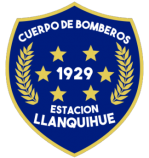The Ministry of Education, Culture, and Science is currently working together with teachers, school principals, and educational specialists on a new national curriculum.
Pre-school education in the Netherlands
Before children reach primary school age, they could go to daycare or preschool, or a combination of the two. Daycare is meant for children from about 10 weeks up to 4 years old. Most daycares only offer full-day contracts for 1 to 5 fixed days per week. In most cities, preschool (voorschool) starts at age 2 https://hookupdate.net/escort-index/san-diego/, and is offered for an average of 15 hours per week, spread out over three days.
Usually preschool is more structured than daycare and they prepare the preschool children for primary school in a playful way, according to a designated program. The focus is on Dutch language acquisition, social skills, and motor skills. Most preschools are connected to a primary school, but run by a different organization. In most cases, your child won’t get automatic access to the connected primary school.
If both parents work (or a single parent works in a single parent family), they should be entitled to a tax rebate (kinderopvangtoeslag) for the daycare costs through the Belastingdienst. This amount is not only dependent on the income of both parents, but also on how many hours they use daycare.
Also in the case of preschool, working parents can apply for the tax rebate. If only one or neither of the parents works, they will get a subsidy from the municipality (gemeente) for the preschool costs.
Primary education in the Netherlands
In the Netherlands, there is a distinction between openbare and bijzondere schools. The openbare schools are both funded and run by an independent foundation that was originally set up by the government. They are always non-religious. About two-thirds of the population attend bijzondere (special) schools, which have their own board and often follow particular religious or pedagogic principles. Usually, the religious schools are fairly moderate in terms of religion and are open to non-religious children, and those who have a different religion. However, this varies per school.
Most primary schools combine groups 1 and 2 (ages four and five) in the same class, the kleuterklas, which is comparable to kindergarten. Here they focus on learning through play, social skills, gross and fine motor skills, structure, independence, and gradual preparation for reading and writing. Formal reading and writing start in group 3, at age six.
The national average number of students in a government-funded school class is 23 to 24. In many bigger cities, you will find more children per class; most schools have a maximum of 28 to 30. One of the main reasons parents choose one of the few private schools are the smaller classes. From group 3 to group 8, most schools have one age group per class. Exceptions are the Montessori and Jenaplan schools, where they combine three age groups.
Different education philosophies
Choice of educational philosophy is very important for many parents in the Netherlands. It is important to understand the differences between the philosophies to be able to make the best choice for your child.
For example, at Montessori schools, children are taught to become independent, and they often work at their own pace. In Dalton schools, they learn to make their own realistic plans and schedules, and work in groups on projects. In Jenaplan schools, the community plays an important role, and Waldorf (vrije) schools have a strong focus on nature and mainly teach through stories, poems, recitals, and plays.
